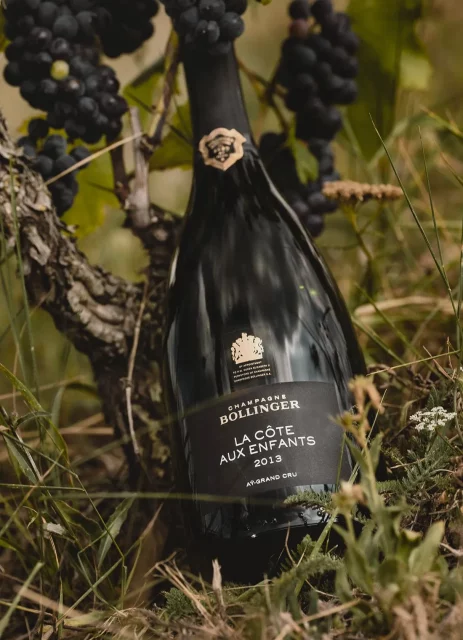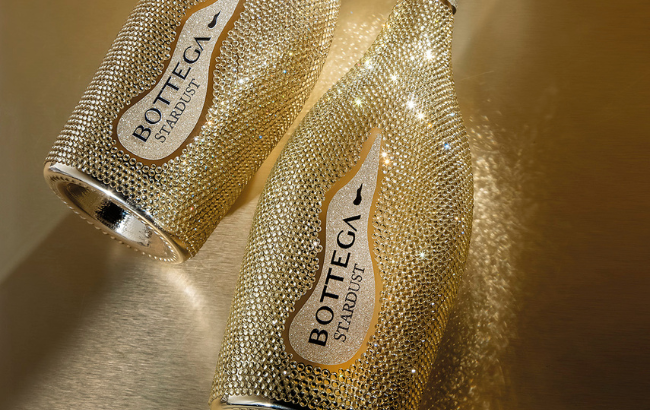Champagne enters ‘new era’ says Bollinger MD
“It is a new era for Champagne,” believes Bollinger MD Charles-Armand de Belenet, who told db last week that the region is shifting its focus towards single site expressions and still wines.

Speaking at a lunch in London’s new Raffles hotel at The OWO Whitehall, de Belenet drew db’s attention to the developments taking place in Champagne, in particular a desire among producers to showcase not just the characters of the villages in Champagne, but specific vineyards too.
Furthermore, he said that such a move concerned an increase in the number of still wines, as well as sparkling.
Comparing the current situation to that of the past, he said that before, “Champagne was mainly about celebrating one terroir, and international brands,” while today it is a markedly different proposition, which he credited in part to a warming trend in the region.
“Now, due to climate change, we have the capacity to produce outstanding vintages, and Champagnes that are different from one terroir to another,” he told db.
Calling it the “Burgundinasion of Champagne” – in reference to the former region’s emphasis on specific vineyards – he said that historically the sparkling wine appellation had more in common with Bordeaux, “with its big châteaux”, but was “now nearer to Burgundy with its focus on terroir and villages.”
Such a change had brough a new type of consumer to Champagne, he also told db.
“20 years ago, fine wine lovers were not interested in Champagne – the bubbles and acidity were too much – but thanks to climate change the quality has improved, with a set of fantastic vintages from 2002,” he said.
Continuing, and crediting the improved character of Champagne to better maturity in the grapes, he said that there had been “growing interest from fine wine lovers,” who, he explained, “have a fine wine lover way of looking at Champagne.”
This, he said, was to view the region like they might Burgundy, which meant “starting with the grape – Pinot Noir or Chardonnay – then the village, and then the block,” according to de Belenet.
With such educated and high spending drinkers now turning their attention to Champagne, de Belenet is enthused about the future for the region’s single-site expressions and still wines. It’s also a trend that has favoured high-quality grower-Champagnes too.
“I see it as a fantastic opportunity for Champagne,” he stated, “Because we have a fantastic terroir that is very diverse.”
“I believe it is a new era for Champagne and I think it will be very exciting, and I believe we will be able to produce outstanding still wines in the coming years, ones that are very similar to the great wines of Burgundy,” he stated.

While Bollinger already make a Coteaux Champenois – the name for still wine from the region – which is called La Côte aux Enfants, de Belenet told db that the house would be augmenting its non-sparkling offer.
“We may release new still wines in the coming year,” he said.
Indeed, he said that in the long term, climate change may be favouring the production of still wines from the more northerly, cooler Champagne region compared to Burgundy, which he said was battling the dual challenge of hotter, drier summers and more severe springtime frosts – which can decimate yields.
Partner Content
At the moment, however, Champagne Bollinger is learning from Burgundy when it comes to still wines, with the umbrella group, Société Jacques Bollinger being the owner of Domaine Chanson in Beaune.
“We are lucky because the group owns Chanson, so we can share the learning,” he said, noting that since the 2015 vintage of La Côte aux Enfants, Bollinger has started using one third whole bunches in the ferments of the wine, following advice from its sister producer in Burgundy.
“This gives more structure to the wine,” said de Belenet, before observing that Champagne is “getting close to the top-end of red wines” with Pinot Noir.
By way of contrast, however, he admitted that this was not the case with still white wines from Champagne, which are made from Chardonnay.
“We have tried to make great white wine, but the quality is not at the level we expected, so we have stopped,” he said.
Meanwhile, Bollinger has increased the number of village- and plot-specific Champagnes it is making.
Starting with the 2012 vintage, launched earlier this decade, Bollinger unveiled its first La Côte aux Enfants Champagne, which he said comes from “the hidden side” of a 4-hectare vineyard in Aÿ, which is used to make the house’s sole still red wine.
Using grapes from the north-west facing part of this particular plot, de Belenet said that this Champagne is “very unique; it is a racy wine that is complex but fresh.”
Speaking further about the site, he said, “Aÿ may be the best village for Pinot Noir, but I believe that La Côte aux Enfants is the best plot for Aÿ,” adding that it encompasses “a steep slope between the forest and the river, which is north-south orientated, with less than 10cm of soil, and pure chalk beneath.”
The producer has also unveiled a range of blanc de noirs from particular villages, starting in 2020 with VZ15, which is a Pinot Noir from the village of Verzenay in the 2015 vintage. This was followed by another couple of expressions, before the release earlier this year of AYC18, a pure Pinot Noir from Aÿ terroir.
Finally, de Belenet stressed the important role of Pinot Noir in the positioning of Bollinger, and the diverse character of Champagne.
“At Bollinger, we have a true passion for Pinot Noir; it is Pinot Noir, Pinot Noir, Pinot Noir,” he said. “It’s why we are still based in Aÿ, and it is our conviction that Pinot Noir is the most exciting grape in Champagne,” he added.
Concluding on the topic of grapes in the region, he said, “Every year is a fantastic one for Chardonnay, but Pinot Noir is very sensitive to the climate and the soil, and so it can be totally different from one year to another, and one plot to another,” he said.
And, it is such differences that Bollinger aim to capture to draw in and retain the attention of high-spending and knowledgable wine drinkers.
Related news
The best brut non-vintage Champagnes of 2025
The 'family spirit' behind Champagne Gardet's 130th anniversary




